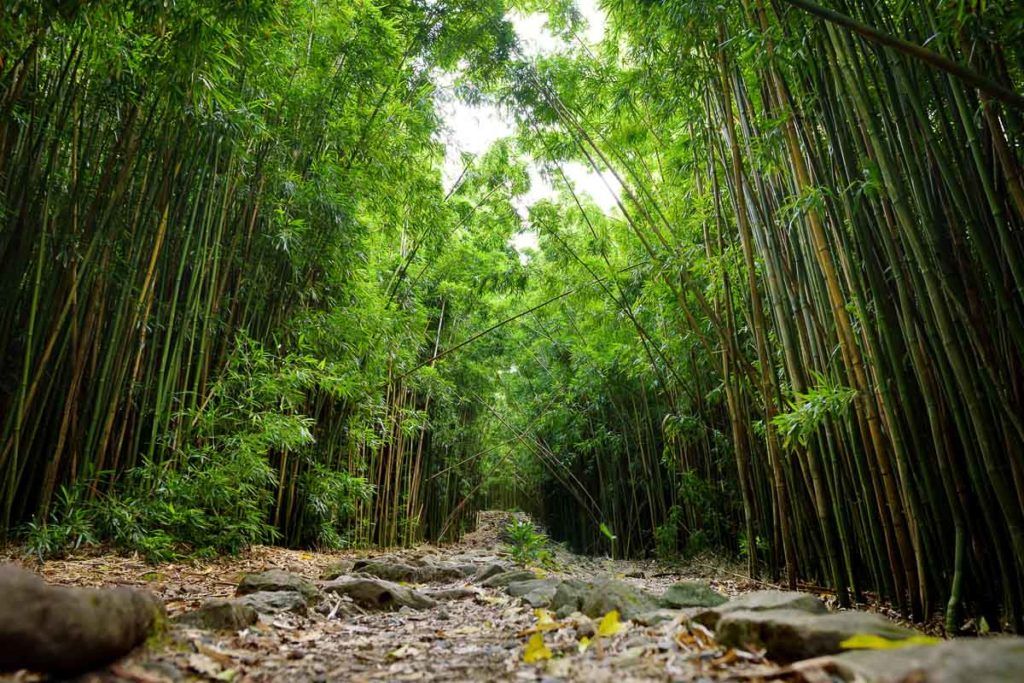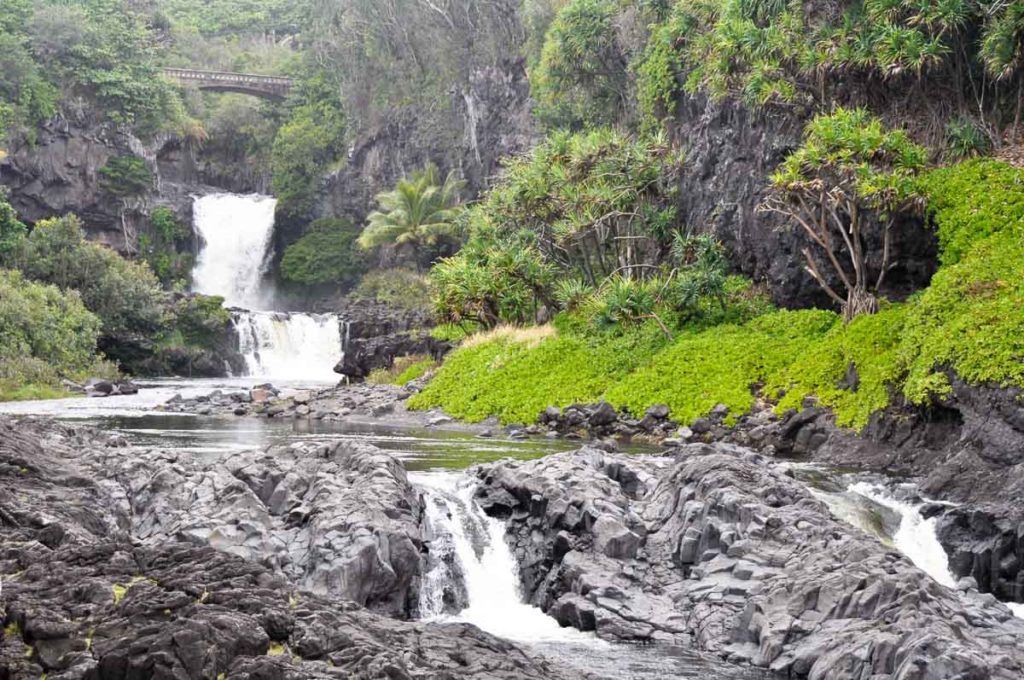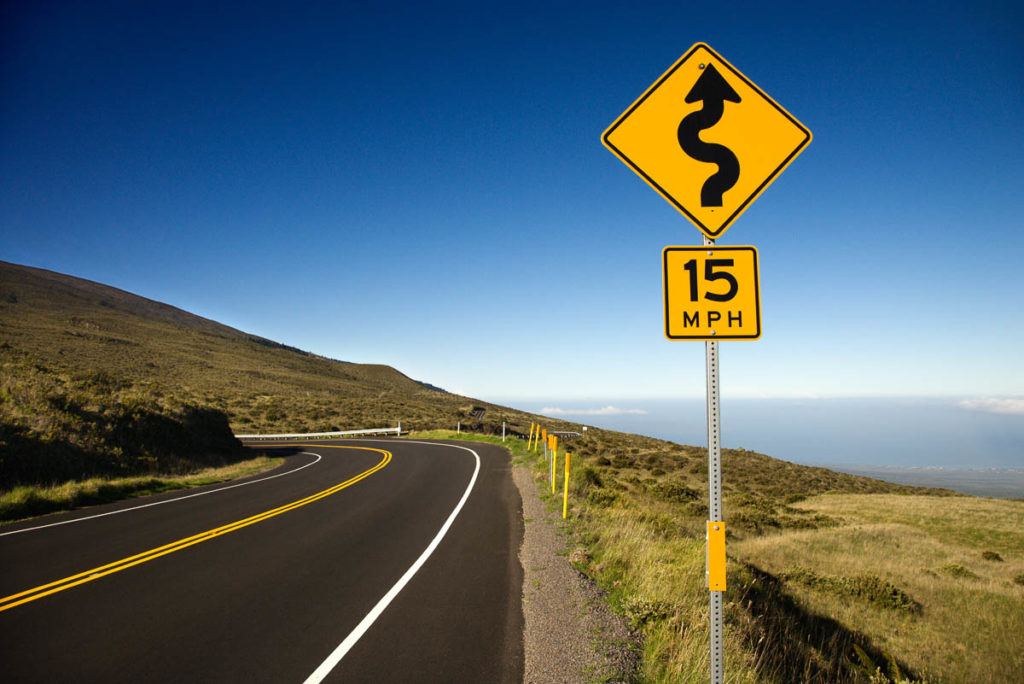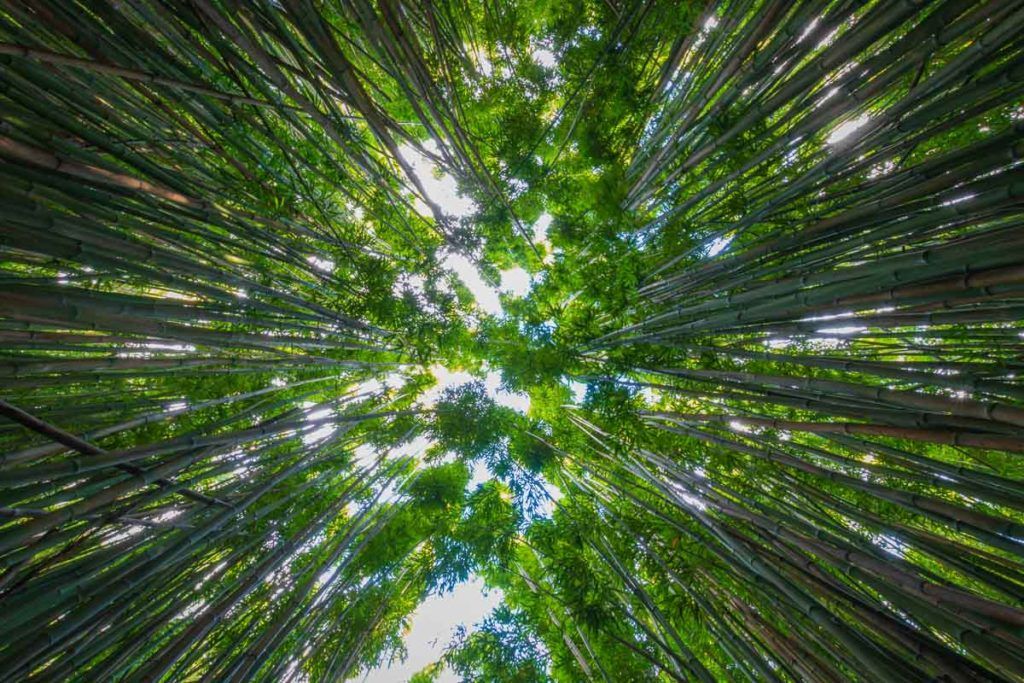Some of our links are affiliated, we will earn a commission when you buy a service or product. This will have no extra cost for you. For further info please refer to our Privacy Policy

If you’re anything like me, lush greenery and thundering waterfalls are the images that come to mind when you think ”tropical paradise.” And that’s exactly what Bamboo Forest, Maui, is: a little slice of heaven on Earth.
With such a splendid natural setting, I’m not surprised how many people love to put ‘Bamboo Forest’ on their itinerary. Of course, the views are stunning. However, there are also so many adventures you can have swimming, hiking, or driving. I’ve got the low-down on how to make your trip to this corner of Hawaii magical. Grab your trusty backpack, and let’s get exploring!
Why you should visit the Bamboo Forest, Maui?
For most tourists, the Bamboo Forest is just a gateway to the many pools and waterfalls around it. But the forest itself is a wonder that must be admired.
Bamboo stalks line the wooden deck pathway. Bamboo is a fast-growing plant that reaches heights of up to 39 feet. Forests with bamboo play an integral role in the ecosystem. This bamboo hike in Maui also boasts loads of ferns, and you may even spot some edible flowers.
At points on the route, the stalks form an arch above the walkway so that you cannot even see the sky. Looking ahead, you can see the sunshine shining through at the end of the trail. The rays of light emphasize the different hues of green and gold in the stalks. This is a very Instagrammable spot.
The bamboo also stimulates your other senses. Because they let in so little sunshine, the temperature is noticeably cooler than the surrounding area. When the wind blows, the tree stalks bounce together. Some say it sounds like a wind chime. The atmosphere is very zen.

Things to do near the Maui Bamboo Forest
So, besides the Bamboo Forest in Maui, what else can you do in the area? The answer is “loads”! Adventurers and sports enthusiasts will particularly enjoy the surrounding attractions, as will keen photographers.
– Na’ili’ili-haele stream & waterfall
The Bamboo Forest, known as Na’ili’ili-Haele in the Hawaiian language, is home to stunning waterfalls. At the heart of the woods is a stream with four waterfalls crashing down to form lovely little pools.
Swimming in the pools is refreshing. It brings a sense of tranquility that’s hard to find outside of such spectacular natural sites. The water can be quite cold in winter, but it’s not too bad if you go in summer.
If you’re after an adrenaline rush, climb the rope to the top of the third waterfall. From there, you can use a ladder and rope to follow the stream before swimming and climbing up to the fourth pool, Emerald Pool.
For a more leisurely swim, stick to the first two waterfalls. You have to use a rope to reach the first one, but most agree that this is easy. From there, it’s an easy walk to the second fall.
– Bamboo Forest on the Road to Hana
The Road to Hana is a 55-mile highway in the northeast of Maui Island. It’s an incredibly scenic drive with many attractions along the way. On the Road to Hana, the Bamboo Forest is just one of the highlights.
Getting to the Bamboo Forest on the Hana Road can be a bit of an obstacle course. There are 54 one-lane bridges and over 600 curves, including some tricky hairpin bends. The drive alone, without stops, takes around three hours. But, as you can imagine, the scenery is simply out of this world.
If you’ve got a thing for bamboo waterfalls, I’d recommend stopping at Haipuaena Falls, which is much less crowded than those at Na’ili’ili-Haele. The water’s icy, so go at the height of the day. The Three Bear Falls, further along the road, is also a good idea.
To get a taste of local sweet treats, pay a visit to Keane Landing Fruit Stand. This roadside stand sells delicious banana bread and is conveniently at a beautiful viewpoint of the twisting Hana road.
The Wailua Valley State Wayside at the 19-mile mark is another fantastic pitstop. The views of Ke’anae Valley and Wailua Peninsula are unforgettable. Also, pop by Wai’anapanapa State Park for the impressive lava field.
Click here for more guides and inspiring destinations in the United States.
– Bamboo Forest and Haleakala National Park, Maui
The Bamboo Forest is part of the Haleakala National Park. This expansive park has two sections. The summit side with its desert landscape is the most famous, but the Kipahulu area is where you will find the renowned bamboo trail in Maui.
However, there are other exciting places to visit in Haleakala National Park. You’ll be able to enjoy natural highlights like waterfalls and leafy trails.
Since it’s a national park, you need to pay an entrance fee of around $30 USD per vehicle. You could also purchase a Hawaii National Park Pass or a U.S. National Park Pass for entry into multiple parks in these regions.
– Pipiwai Trail
Pipiwai Trail snakes through Haleakala National Park, passing a handful of super cool sites. The Bamboo Forest is only one of these.
The first attraction along the way is the Makahiku Falls Viewpoint. At 200 feet high, this waterfall is hardly the most impressive you’ll encounter, but it is nonetheless a stunning sight. It’s just a half-mile walk to this lovely site. Carry on another half a mile down the path, past a few more waterfalls, and you’ll reach the celebrated bamboo hike in Maui.
If you follow the path past the celebrated forest, the trail will take you to Waimoku Falls, which is 400 feet high. At this point, you’ll have trekked for two miles. So, all in all, the Pipiwai Trail is four miles long and takes around two hours to complete (it’s a one-way route).
Look out for the banyan tree: this thick fig tree’s branches and trunks spread out in all directions. This tree, a symbol of eternal life in Hinduism, is an unusual sighting.
Ensure that you have the proper gear to hike the Pipiwai Trail: hiking boots and a raincoat are essential.

– Kūloa Point Trail and the 7 Sacred Pools
This trail begins at the Kīpahulu Visitor Center. Since the entire loop is only half a mile, you should add this to your itinerary. I advise you to go in a counterclockwise direction since this will yield the best views.
This hiking route is unique because it includes aspects of Hawaiian culture. For instance, there’s a cultural village where you see a thatched house, ancient walls, and cultural artifacts. This is a great place to learn about local traditions while still enjoying the fresh air.
Amongst the verdant flora, look out for Hala trees. These plants produce a fruit that looks a lot like a pineapple. The path goes downhill before rising to a hill that boasts epic vistas. On a clear day, you can spot Big Island, which is 30 miles away.
The next highlight is the mouth of Ohe’o Gulch River. After this landmark, you’ll soon come to the iconic 7 Sacred Pools.
The 7 Sacred Pools are a chain of waterfalls that flow into each other, producing the seven water chambers. As inviting as the water looks, you’re probably better off avoiding swimming. (Due to the interlinked nature of the waterfalls, flash flooding can lead to rock falls).
Despite the name, these pools aren’t religious sites. Ohe’o Gulch does, however, translate to “something special.” This is a fitting name for such a rare sight. At the base of the lowest fall, you can look up and admire the chain of crashing waterfalls.
Naturally, it’s a popular destination, so try your best to get here early when the crowds are thinner.

Bamboo Forest, Maui directions
The Bamboo Forest is off the Hana Highway (aka the Road to Hana). It’s about 20 minutes outside of Haiku. Once you’ve passed the tight hairpin bend on the highway, you should see lots of parked cars. The trail’s entrance is through one of the two holes in the fence (the third hole goes to another destination).
- Hwy 330 mile marker 7, Hāna, Hawaii, 96713
If you want to enter the forest through the Haleakala National Park, you’ll find the entrance towards the end of the Road to Hana.
- Hwy 31 mile marker 42, Hāna, Hawaii, 96713
Tips for visiting Bamboo Forest, Maui
The best trips require a little bit of planning. Bamboo Forest is a fantastic destination, but there are some things you need to consider to have the best time possible.
– Safety
As with many natural wonders, this beautiful site can be dangerous. Please stay up-to-date on the latest advice from the local government and take care when visiting.
Several people have been injured in the forest, mainly during flash floods. Your Haleakala National Park ticket means you can walk the Pipiwai Trail, but some of the sites around a few waterfalls have been officially closed to the general public for a couple of years now.
However, that hasn’t stopped people from coming here. In fact, you can still get permission from the East Maui Irrigation, a local authority, to visit.
If it’s rained a lot recently in the area, I’d advise you to stay clear and simply take in the gorgeous Road to Hana.
– Fitness levels
The walk to Bamboo Forest isn’t too tricky but navigating the waterfalls is trickier. The third and fourth waterfalls are best suited for the fit and adventurous. If you carry on past the forest to Waimoku Falls, the elevation reaches 800 feet, so you need a reasonable fitness level for this.
Dogs are allowed on this route, but they’ll struggle past the first waterfall.
– What to wear
The forest is very muddy, so be prepared to get dirt on your clothes. A raincoat will help since it often drizzles.
Waterproof shoes are another good idea. They will also protect you from stinging centipedes.
I recommend that you bring along some insect repellent. Due to the damp, shady conditions, mosquitos love the woods and are quite a nuisance if you’re not prepared.
– Cell phone signal
There’s no wifi or even cell phone signal along the Road to Hana. Therefore, you should download any resources you may need ahead of time, including your planned route.

– Tours of the Bamboo Forest
Taking a guided tour or even a day trip has many advantages. Not only do you have to put less effort into planning and preparation, but you also get the benefit of a guide’s expertise and insight into the area. And if you’re nervous about the many bends on the Road to Hana, it’s best to leave the driving to an expert.
The Bamboo Forest and the broader area on the Road to Hana are trendy destinations. This often brings the masses, but it also means that there are various choices for guided tours. Here are some of my favorites:
- Small-Group Road to Hāna Sightseeing Tour: This day trip takes in all the major sites along the Road to Hana. The local guide is knowledgeable, and there’s lots of time to swim.
- Self-Driving Audio Tour to Road to Hana: it’s an app that works as a guide and map, all in one. The tour was created by local guides and curated by creative writers.
- 75-Minute Hana Rainforest Helicopter Tour: This is an excellent option if you want a bird’s eye view of the winding Road of Hana and the mass of jungle inland.
And here are a few other unique tours on Maui Island you should do:
Where to stay near the Bamboo Hike in Maui
Ideally, you should spend one or two nights on the Road to Hana so that you can take in all of the landmarks. There are a few places you can sleep in the area.
Haleakala National Park, Maui, offers camping facilities. This is ideal if you want to beat the crowds when visiting the Bamboo Forest. It’s also a great way to make the most of Hawaii’s natural environment: the Kipahulu campsite is a short walk from the 7 Sacred Pools.
Remember, though, that the facilities at the campsite are basic: think pit toilets and no food supplies. If you prefer a minimum effort kind of holiday, you’re probably better off staying in Hana or Haiku.
As the name “Road to Hana” suggests, Hana is the main town in this area and has an airport. It’s an hour and 15 minutes from the forest by car. That’s why it’s a convenient base for visiting the Bamboo Forest, Maui. Hana is also a fantastic place to stay if you want to see the Black Sand Beach in Maui.
Here are some suggested accommodation facilities in Hana:


Alternatively, you could stay in Haiku-Pauwela. Here are some excellent guest houses for you to spend the night:


Don’t forget to read our Accommodation Guide for more tips on how to choose and book the best place to stay for any trip.
When to visit Bamboo Forest, Maui?
When planning your trip to Hawaii, you must consider the weather and seasons. Given the impact weather has on the landscape, is there a best time to visit the area? I’d say so.
Maui gets the most rainfall during winter (November to March). Although the rain doesn’t often last long, it can make the terrain difficult for hikers. For instance, it can make the rocky areas around waterfalls slippery and lead to flash flooding and rockfalls. That said, I advise you to avoid visiting Maui in winter.
Summer is from July to September. The weather is warm, and the atmosphere is jubilant. July and August are also school holidays, so the crowds and prices rise before dropping somewhat in September.
In recent years, there’s been an increase in climate-related disasters, such as hurricanes, in the general region. Hurricane season tends to fall between June and November. Although storms are still rare, monitor the news carefully if you plan to go in that period.
So, in my opinion, the best time to visit the Bamboo Forest and Maui generally is in the spring months of April and May. Another advantage of this season is that the island is less crowded, and you may bag a few bargains on accommodation.
What are you waiting to visit Bamboo Forest, Maui?
The tranquility and beauty of the Bamboo Forest, Maui, is sure to take your breath away. Whether you enjoy hiking, spotting the local flora, or cooling off with a waterfall swim at the end, there is something for you in the forest.
And with so many excellent attractions in the area surrounding the Bamboo Forest, I hope I’ve persuaded you to stay a night or two in the area to get the most of it. This region is gorgeous, and it’s the kind of beauty that you only see once in a lifetime.
So, don’t hesitate to book your trip to the Bamboo Forest, Maui! I promise you won’t regret it.
Love this guide to the Bamboo Forest Maui? Pin it for later!!


